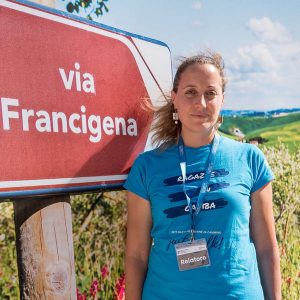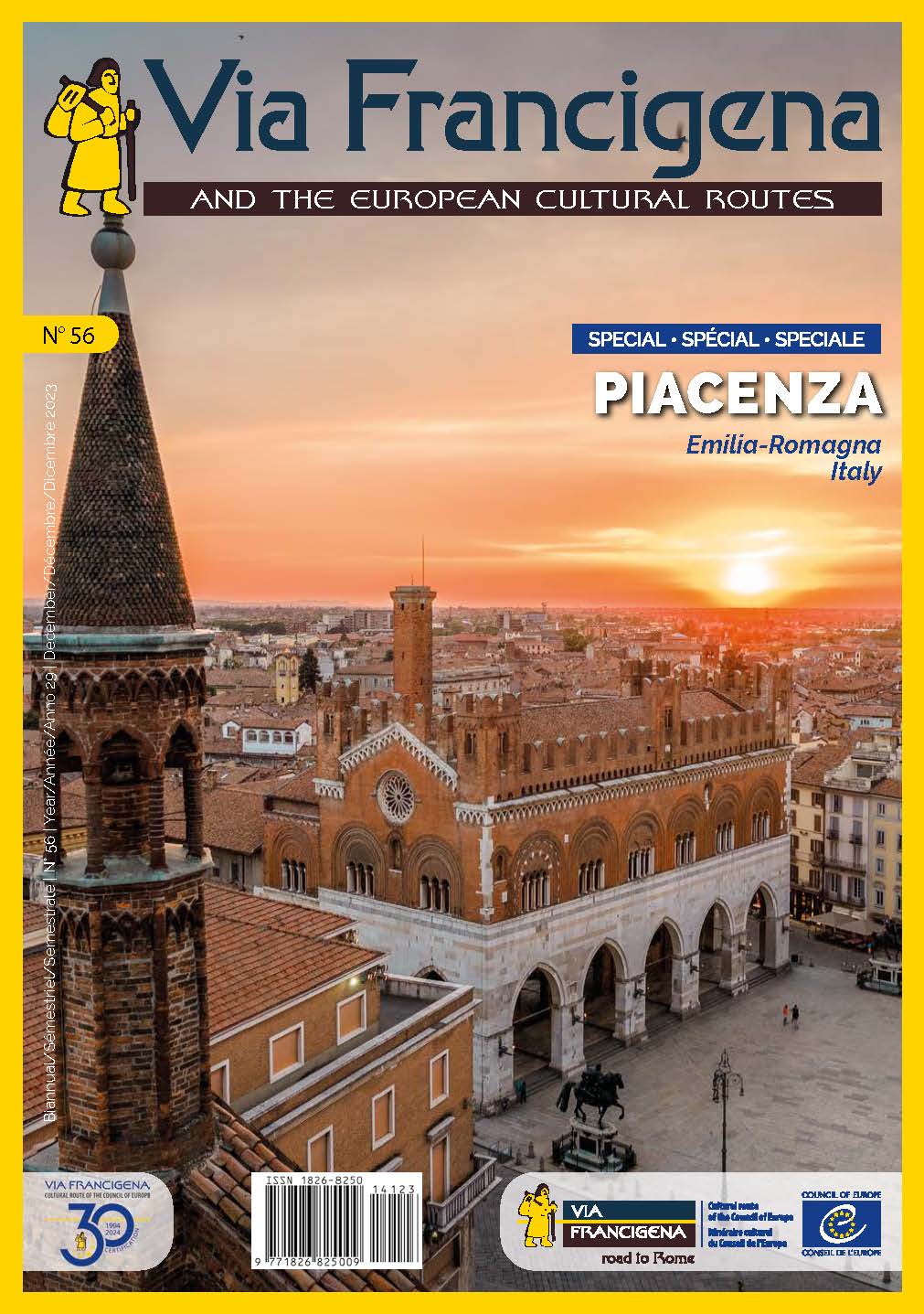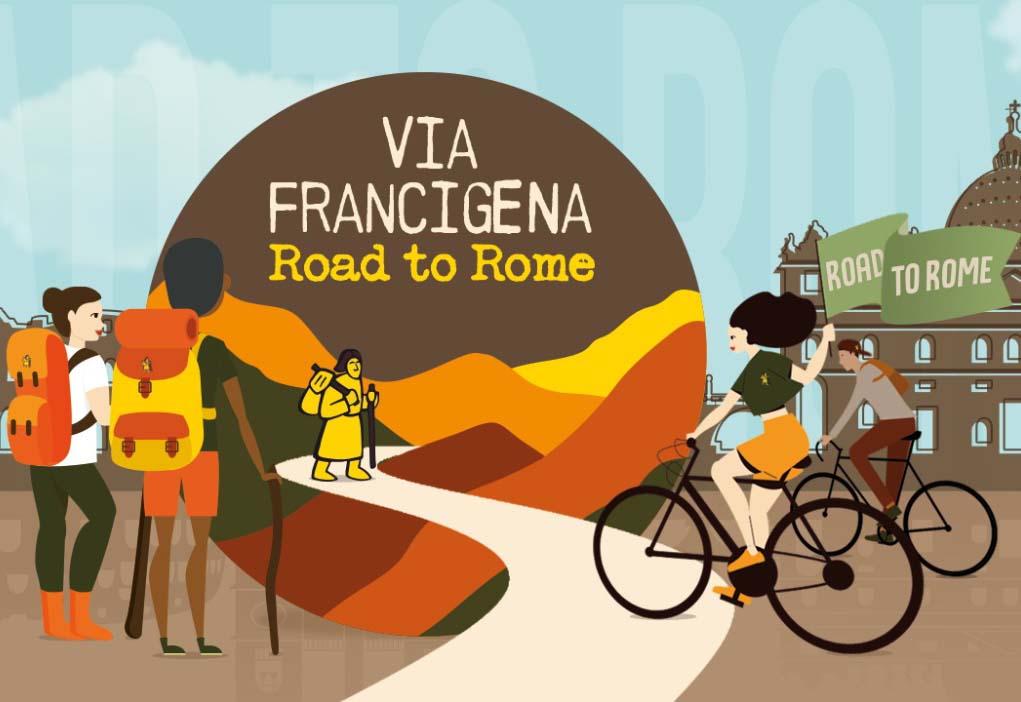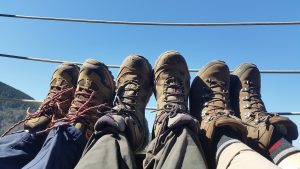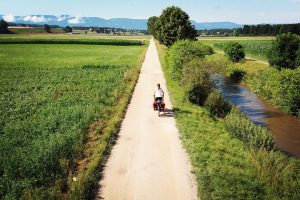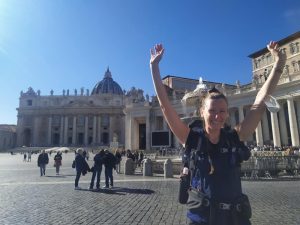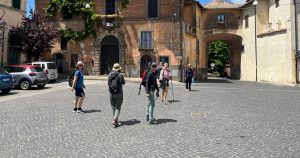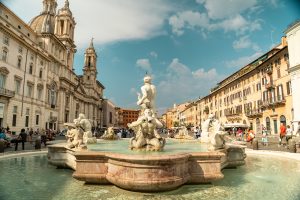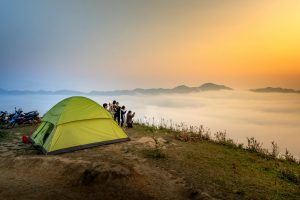The harmony we seek is already within us, we only need to train ourselves to recognize it and give it space. A walking trip can be a simple way to do all this – even more if you depart alone.
In the group “Ragazze in Gamba”, on the social media, you often find witnesses of this type of journey, sparking lively discussions about strengths and weaknesses of the choice of walking alone, as a woman. Currently, not only has the number of passionate walkers and pilgrims increased remarkably, but also the number of women who decide to walk alone. As an observatory space to learn about this phenomenon, I want to start precicely from the Ragazze in Gamba group from the network Rete Nazionale Donne in Cammino, which is full of hints and tips, discussions and stories. For these reasons, I want to give birth to a special column named #StoriediRagazzeinGamba (stories of walking women), in which I will share the stories of women who made it while walking alone. Not only on trail paths, but in their lives.
I started by collecting, in an interview, the solitary walking experience along the Via Francigena of Nicoletta Freschi. In her story, we will discover that walking means to create space for ourselves, although the steps that will bring us the furthest are the steps of relationships. The connections we took distance from – our house, our family, our friends – always walk with us, even when we think we are alone.
Nicoletta Freschi’s interview
Nicoletta, what kind of “ragazza in gamba” (strong walking woman) do you feel like?
I am simply a woman searching for opportunities to cut out some space for the things I like, without feeling afraid about judgement of others, yet respecting others. I am a mother and a worker, but this cannot stop me, every time I can and want, to organize and take some space for myself, such as the time for walking.
The “social roles” with which women are tagged often make it very complicated to decide to leave, and, in general, to do “something else”. Yet, I am absolutely convinced that you can do it if you really want it and need it! The real problem is that we, women, are so drawn in by our thousands of responsibilities that breaking free feels impossible and usually we don’t even try. We are strong women with a great sense of duty towards others, but not enough towards ourselves; I believe that the two things should evolve jointly in order to find a stable and healthy balance, both for our own satisfaction and for the people surrounding us.
I’ve been told that I am a strong walking woman because I don’t get discouraged – I walked through rain and snow – or because I am not afraid. I answer that all this is neither hard nor brave, very simply, because these actions resonate with me; my true courage lies instead in the decision of departing, to really leave, with all the following organizational challenges. What I mean is that the important part is not the journey itself, but finding the courage to start it, overcoming clichés, guilt feelings and excuses. We depart, aware that we could stop at any time, knowing that only the fact of trying is a great victory!
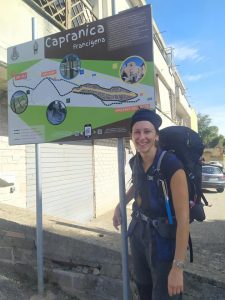
What was your itinerary? From where to where? How many kilometers?
I walked a section of the Via Francigena last October. Specifically, I departed from Viterbo, the stage that I had reached the previous time, and I arrived in Rome. It took me five days, for a total of about 100 kilometers. It was my first walk alone.
Tell us why this time you decided to leave alone.
Honestly, it’s hard to tell. I always walked as a couple, with my husband Matteo, and it was always a natural and beautiful choice: beautiful because we were able (and still are) to leave our lives behind for a few days, finding time for the two of us together, strengthening our relationship, as a couple and as parents; natural because we always shared certain experiences (let it be walking trips or “off-limits” trips), since we face them nicely together, with a similar approach.
In short, only recently the idea of leaving alone came to my mind, simply because I never felt the need for it and, to be honest, the idea was quite boring.
I then started thinking that it would have been interesting to challenge myself. I know myself and I was certain I could do it, but I became especially intrigued thinking about ‘how’ I would have made it: how would I face all the unexpected situations of the trip? What kind of problem-solving ideas would I have, without leaning on someone else? Traveling alone forces you to self-reflect and open to new encounters and situations: I became very curious.
As I had a few more work holidays available, I shared this idea with my husband who was always very open and supported me. The next step was asking help to grandparents and aunts and uncles for the management of my children. Ultimately, I spoke with my children (9 and 6 years old), but I knew they would be happy for me, because it was not the very first time I was leaving for a few days and because when they see me happy, they are too…and I wasn’t just happy, I was buzzing with enthusiasm! On the other hand, a few friends and colleagues were skeptical about my choice. Explaining it to them was not easy, but in the end, it doesn’t matter to have everyone understanding!
Why did you choose this itinerary?
I had already walked part of the Via Francigena and I loved it, so I considered continuing it, although I initially thought it was unfair to arrive in Rome without my husband, walking companion of a lifetime.
However, in the end, being my first solitary experience, I decided the difficulty of the itinerary was just right: the stages were perfectly doable for me and I would be able to meet people even in low tourism season along the route. Nevertheless, I promised to my husband that we would cover this section together by bike as soon as possible, so that it will be a bit quicker, and we will be able to enter Rome together!
What other walking experiences did you have before this, and what will the next ones be?
My first walking experience was three years ago along the Via Francigena, when I covered, in wintertime, the section between San Miniato and Siena. The following autumn I picked up the Francigena from Siena and went to Viterbo. Last spring, instead, I walked the “Via degli Dei” from Bologna to Florence.
Apart from some sections of the Francigena above San Miniato and cycling from Viterbo to Rome (I promised it!), the next walking journey I wish to do is the Cammino di San Jacopo, which departs from Florence and goes through Prato, Pistoia, Pescia, Lucca, Pisa and Livorno: I am Tuscan, and this is a great chance to see my lands through different eyes. I am also curious about the Cammino dei Borghi Silenti and the Southern Via Francigena. Just as many other walkers, I dream Santiago – sooner or later it will happen!
Walking: why?
We could say many things about walking as a metaphor – each of us gives it a more or less spiritual meaning. The truth is that I walk because I like it and it makes me feel good (physically and mentally) and, as I said, I want to do what I like as much as I can, so that I can be satisfied with myself and others can enjoy being around me. Even if it is rhetorical, I will tell you that it makes me feel well because walking allows to look at things from a different perspective: if you simply walk for the pleasure of walking and enjoying the landscapes, your simple mindset will overcome all the complex mental schemes that usually reign over daily issues. In my opinion, walking allows to see (or retrieve) the essential, connecting with your true self and the true reality that surrounds you. Plus, there is all the preparation phase, where you study and plan your journey – for me it is very fascinating. Lastly, I believe walking is a sort of “drug”: if you start, and you like it, the need to walk always stays with you!
What was the most beautiful stage of your journey?
The best landscape was in the stage Vetralla – Sutri. In particular, I enjoyed the section that leads from Capranica to Sutri: the route goes through thriving woods aside a river, crossing the water a few times with small wooden bridges. It felt like an enchanted forest. Arriving in Sutri, you find the amphitheater and Etruscan caves which are jaw dropping. That day I left Vetralla quite sad and lonely, whereas I arrived Sutri happy and in good company, with three other pilgrims which became a constant presence during my entire trip. The arrival in San Pietro was very emotional too, just as the sight of Rome from Monte Mario, where I had never been before.
If we speak about spiritual journey, instead, the most beautiful and challenging stage was Viterbo – Vetralla. It is probably one of the easiest and shortest stages, but it was the one that confronted me the most: it was my first stage, the only stage I walked entirely alone (I didn’t meet anyone along the route, and I was the only guest at the hostel), and the one that really filled me with question marks.




